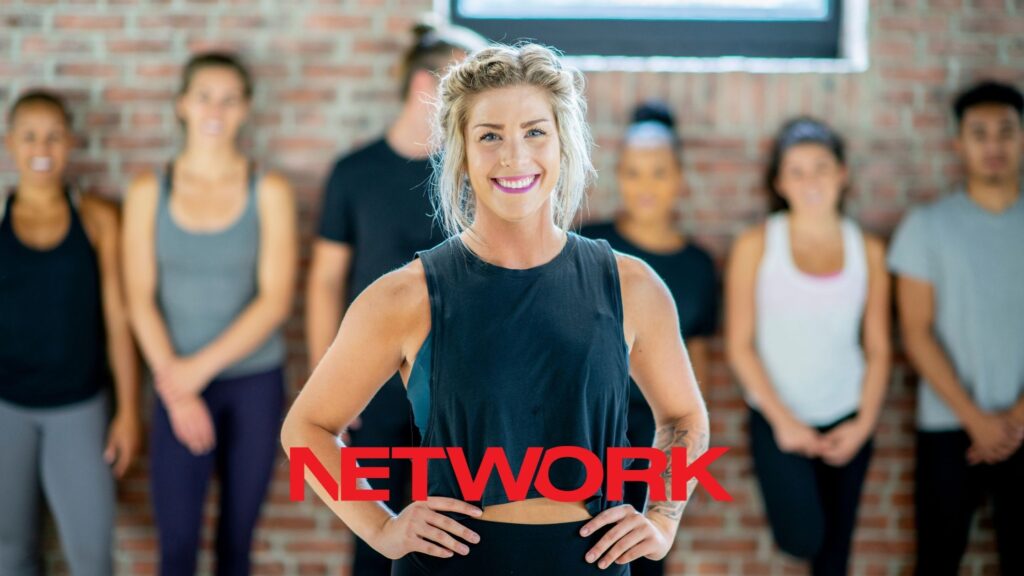The Fitness Zone

You’re NOT an imposter: how to own your GX class delivery
Group fitness guru and all round industry legend Marietta Mehanni knows the doubts that can creep in when you’re teaching classes. Vanquish the little voices by following these three confidence-boosting tips.
Teaching a group fitness class can be an incredibly empowering and gratifying experience. It can also be challenging, daunting and downright terrifying. There’s always a little voice in the back of your mind telling you that you don’t know enough to teach a class, or that people will be judging your every move while they watch you.
There’s always a little voice in the back of your mind telling you that you don’t know enough to teach a class
Teaching a class is like going on stage – you have to get out of your head, get over yourself and go for it, because despite being a massive tummy butterfly generator, it can also be the most fun you’ve ever had. I’m not even exaggerating. You know the famed ‘Rock Star’ instructors? They’re not just called that because their participants think of them that way, they also FEEL like rock stars after delivering a no-holds-barred awesome class. The buzz can be incredible.
The most important thing to know about teaching a group fitness class is that the participants don’t care about you. They don’t care how much experience you have. They don’t care how many degrees you have hanging on the wall. They simply want to enjoy the class and feel successful doing it, and they are there because they want to improve their health and fitness. A successful class is about helping participants get what they came for.
They simply want to enjoy the class and feel successful doing it
Here are some tips on how to prepare yourself and keep your cool when you’re standing in front of a room full of participants that are hanging on your every word and move.
1. Before you teach… PREPARE!
REALLY prepare. Not just a casual runthrough in your head of what you remember seemed to work quite well in a recent class.
Make a list of exercises you’re going to do in the class. This will help keep you on track during your time in front of the room and impress your students with your knowledge and creativity. If you are aware of what exercise is coming up next in your workout and how it is meant to progress through the class, then this will give you a sense of confidence. This also helps participants feel safe when they come to your class.
A good rule of thumb is to plan out what you’re going to say and make notes so that you can refer back to them if necessary. Make a list of things you’ll say during your class. Everyone loves hearing about themselves, so why not take advantage of that and incorporate the names of some regulars into your delivery? ‘I hope you’re ready for Linda’s favourite, because here it comes – 30 seconds of squat taps!’
Depending on the type of class, you may want to say something different every time you introduce an exercise or station. For example, if you’re teaching an arm toning circuit, you might ask people what they did over the weekend (and then call out their activities), or let them know how many calories they burned during their workout last week.
Nothing is worse than forgetting what comes next because you haven’t prepared at all.
Plan your playlist so that it has a good mix of upbeat songs that will motivate people through their workout and slower songs that help people wind down after an intense exercise session and move into the stretch.
2. Practise, practise, practise!
This really is one of the most important tricks to boosting your fitness teaching confidence. If you want to be good at something, then practise makes perfect! The more you teach and practise teaching, the more confident you will become in yourself as an instructor.
There’s nothing worse than seeing an instructor who doesn’t know how to demonstrate the moves properly
As you develop your own style of teaching, keep these tips in mind:
Practice your demo a few times
There’s nothing worse than seeing an instructor who doesn’t know how to demonstrate the moves properly. Even if you are a great dancer or athlete, you’ve got to know what the movements look like when they are done properly. If you’re leading a high-energy cardio or dance class, spend some time practising your moves at home (or in front of a mirror at the gym, if it’s allowed). This may seem silly, but it helps you to get comfortable with what you’re teaching. And it helps you look like an expert when you’re demonstrating the moves in class.
Practice your transitions between moves
It’s really important to learn how to move easily from one exercise to another. Transitions are important. They keep the pace going and they provide structure to the class. For example, if you have music playing, don’t just play one track after another – build up towards a peak, with crescendos and then bring it down again before moving on to the next song.
Practise in front of a mirror
Remember when you used to mime along to the Spice Girls/The Bangles/Madonna in front of the mirror, hairbrush mic in hand? Time to revisit those glorious times. Practice saying everything in front of a mirror over and over until it feels like ‘you’ saying things. It’s so easy to get caught up in the actual movement that we don’t pay attention to what we’re saying. And if we don’t have our audience’s attention, then the whole class is lost!

3. The Power Pose
Some instructors are natural performers who love the limelight. Others are more hesitant and prefer a less public role. No matter what your comfort level, power posing is a great tool that can help you feel more confident before going onstage.
Amy Cuddy is a social psychologist at Harvard Business School who has conducted research on how body language affects performance. In one experiment conducted with two groups of people – one high-power group and one low-power group – Cuddy explains people who sit in ‘expansive’ postures (e.g. sitting tall or standing with their arms and legs spread open) not only feel more powerful than those who sit in ‘contractive’ postures (e.g. cross-legged or hunched over), they also perform better on cognitive tests and physical tasks.
It’s called ‘power posing’ because it boosts testosterone and lowers cortisol which gives you more confidence and reduces fear.
Power posing may seem unnecessary, even silly, but it has been proven over and over that simply doing something as simple as this in the moments before you are about to do something stressful will help you perform better. It’s called ‘power posing’ because it boosts testosterone and lowers cortisol which gives you more confidence and reduces fear.
So what should these poses look like? Well, each instructor is different, so there isn’t an exact right or wrong way to stand. It’s all about what feels natural to you. One suggestion is to stand with your feet at least a little wider than your hips. Your arms can be out to the side, above your head or with your hands on your hips.
Hopefully, you’ve picked up a few tips from this article that will help you deliver your next class with the confidence that you deserve to feel. If you’ve got the passion and aptitude for teaching others about your chosen activity, and you put in the necessary planning and preparation, your confidence will soar and you can be a great teacher.
Marietta Mehanni
Monash ‘Outstanding Contribution to the Industry’ 2019 award winner and Australian Fitness Presenter 2018, throughout COVID Marietta provided hundreds of free online live workouts. She is the international Master Trainer and Education Coordinator for Gymstick International Oy, co-founder of My Group Move and co-creator of mSwing, a fascia-based group fitness program.
mariettamehanni.com / mygroupmove.com/ / facebook.com/mmehanni
Read more articles
Disclaimer: Where Certificate III in Fitness, Cert III/Cert 3, or Fitness Coach is mentioned, it refers to SIS30321 Certificate III in Fitness. Where Certificate IV in Fitness, Cert IV/Cert 4, or Personal Trainer is mentioned, it refers to SIS40221 Certificate IV in Fitness. Where Master Trainer Program™ is mentioned, it refers to Fitness Essentials and SIS40221 Certificate IV in Fitness. Where Master Trainer Plus+ Program™ is mentioned, it refers to SIS30321 Certificate III in Fitness and SIS40221 Certificate IV in Fitness. Where Certificate IV in Massage or Cert IV/Cert 4 is mentioned, it refers to HLT42021 Certificate IV in Massage Therapy. Where Diploma of Remedial Massage is mentioned, it refers to HLT52021 Diploma of Remedial Massage.











